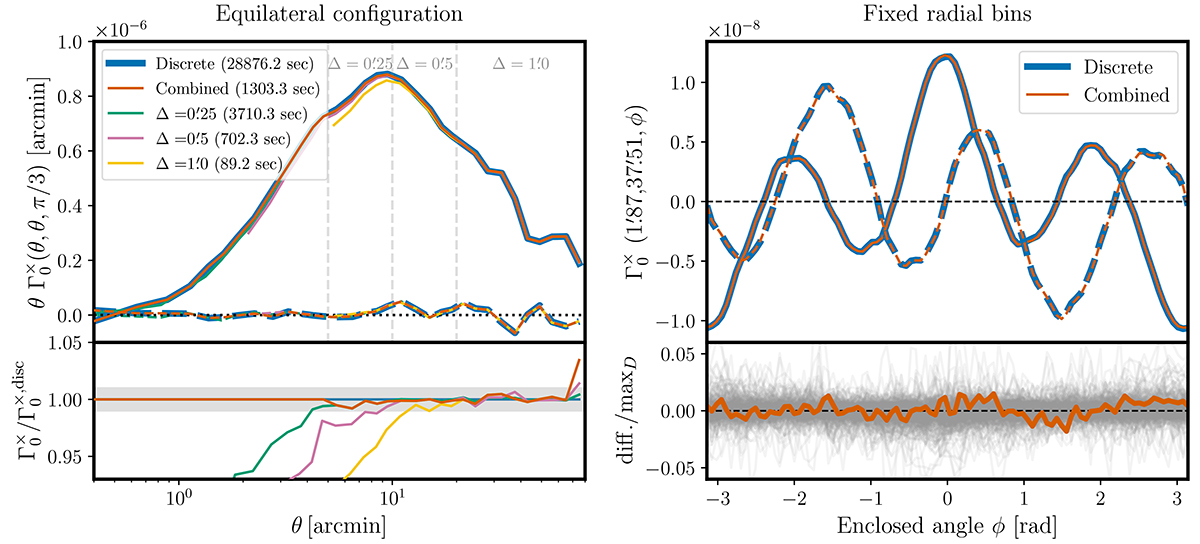Fig. 3.

Download original image
Performance of the combined estimator on a noiseless mock catalog with ≈3.1 × 106 ellipticities on a 100 deg2 area. In the upper panels, solid lines indicate the real part of the 3PCF, while dashed lines represent the imaginary part. Left-hand side: Comparison of various discrete, grid-based estimators, and a combined implementation of the multipole estimator for equilateral configurations of the zeroth natural component of the shear 3PCF. The timings correspond to the runtime on eight CPU cores and the dashed vertical lines indicate the regions of constant grid resolution for the combined estimator. In the bottom panel, we show the ratios of the real parts between all approximate implementations and the discrete estimator. The gray-shaded region displays a one-percent interval. We note that, by construction, the curve corresponding to the combined estimator always lies on top of the curve corresponding to the resolution, Δd, in the interval 20Δd ≤ Θlow ≤ Θup ≤ 40Δd. Right-hand side: Comparison of the discrete and the combined estimator for different triangle shapes. We fix two triangle sides and vary the enclosing angle, ϕ. In the bottom panel, the thick red line shows the difference between the real part of both estimators, normalized by the largest value of the discrete estimator for the given radial bin combination, maxD. The gray lines display the corresponding ratios of all other radial bin combinations, where again the normalization was done with respect to the largest value of the discrete estimator for the corresponding radial bin combination.
Current usage metrics show cumulative count of Article Views (full-text article views including HTML views, PDF and ePub downloads, according to the available data) and Abstracts Views on Vision4Press platform.
Data correspond to usage on the plateform after 2015. The current usage metrics is available 48-96 hours after online publication and is updated daily on week days.
Initial download of the metrics may take a while.


